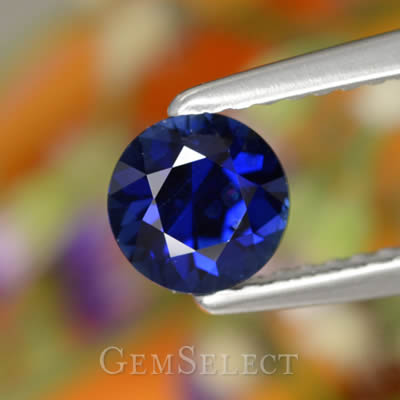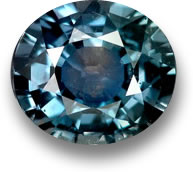Gentle Heat Treatment
Many people who are seeking natural sapphire prefer to buy unheated sapphires. However, since these untreated gems are so rare, there is a limited choice of color, size and shape. The overwhelming majority of sapphires on the market have been heat-treated, including many of the high-end stones.

Heated Blue Sapphire from Madagascar
Some customers who have become acquainted with the realities of the sapphire market inform us that they are willing to buy a heated sapphire, but one that has been treated with "gentle heat" only. The term "gentle heat" was not a familiar term to us, but it appears to be an increasingly popular concept. When we saw it used with approval on a website by a group calling themselves the Jewelers Ethics Association, we became concerned.
Our concern is that the term "gentle heat" for the heat treatment of sapphire and ruby is misleading, since this treatment is actually done at very high temperatures. Even the so-called low temperature heating of gems such as quartz, apatite, beryl, spodumene and tanzanite, is carried out at temperatures that many might find surprising.

Unheated Blue-Green Sapphire from Tanzania
The reason why sapphire is heated at very high temperatures is that the goal of the heat treatment is to dissolve rutile inclusions. When rutile is dissolved, it has two salutary effects; the clarity of the stone is improved by the elimination of cloudiness and the color is enhanced by the release of titanium into the sapphire lattice.
In order to achieve this goal, very high temperatures are required, since rutile (titanium dioxide) begins to dissolve at temperatures around 1650 degrees centigrade and has a melting point of 1843 degrees centigrade. I don't think anyone could fairly call this "gentle heat". In fact it is in the same temperature range as the ovens that are used to cremate human remains.
Other gem varieties, such as quartz, tanzanite and beryl, are heated at much lower temperatures to improve their color. But even this "low temperature" heating is accomplished at temperatures ranging from 600 to 1200 degrees centigrade; 2 to 4 times higher than the maximum temperature of most kitchen ovens.
The only "gentle" thing about low temperature heating is that it does not cause internal structures in the gem to dissolve or melt. For that reason it is usually very difficult to tell whether a gem has been heated at these lower temperatures. Even the best gemological labs will not usually be able to determine that such gems have been heated. loose Sapphires, on the other hand, can reliably be graded as heated or unheated because they are heated at extremely high temperatures. As much as some buyers might be disappointed, there is nothing "gentle" about it. |
